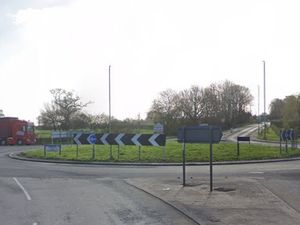Whitchurch town centre 'at risk' with rundown and empty buildings
An historic town centre is at risk due to rundown and empty buildings and unsuitable modifications, according to a government heritage body.
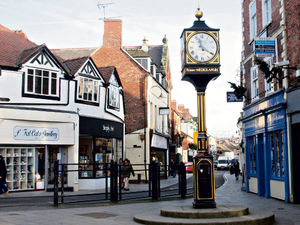
Whitchurch town centre's conservation area was today added to Historic England's Heritage at Risk register.
The list, published today, identified 98 sites across Shropshire as being in danger.
Shropshire Star Comment: Don’t save on future of heritage
However, two sites in the county have been removed from the register following vital remedial work.
The Nags Head engine house at Pontesbury, and the Bedlam Furnace at Ironbridge were today removed from Historic England's Heritage at Risk register.
Whitchurch, which can trace its roots back to Roman times, is one of four conservation areas in the West Midlands which have been declared to be at risk.
Also on the list are Austin Village in Birmingham, Green Street in Kidderminster and Ribbesford near Bewdley.
According to the report, Whitchurch's historic character was under threat from excessive use of uPVC windows, empty buildings and a general lack of maintenance of some properties.
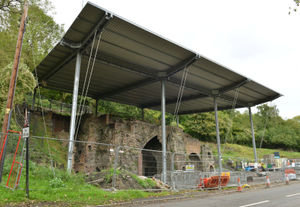
Whitchurch Town Council declined to comment.
This year's register has seen 37 sites across the West Midlands having been removed as they are no longer at risk, but 24 new sites have been added.
Rhodri Evans, who is responsible for the register in the West Midlands, said it served as a "health check" for the area's cherished places.
"We’re delighted that we’ve secured the future of 37 sites which are today being taken off the register," he said.
"However there are still many sites which are vulnerable and decaying. "Finding solutions is challenging but we are making good progress and are hopeful that the number of places at risk will continue to decrease, as it has this year.”
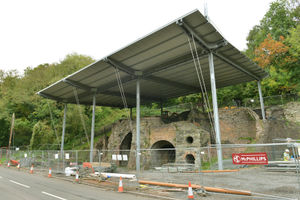
Bedlam Furnace is thought to be the last surviving furnace of its kind in the country.
It was built by Abraham Darby in the 1750s, and remained in use until the 19th century.
Last year's register reported its walls were collapsing and the site was suffering from water damage.
Historic England gave a grant for a protective metal canopy to protect the remains as part of a scheme to conserve this important scheduled ancient monument.
Earlier this month, the scaffolding was finally removed from the site after several weeks.
The canopy will ensure it is no longer damaged by winds and rain.
Now that work is complete, the project is continuing to touch up some of the masonry.
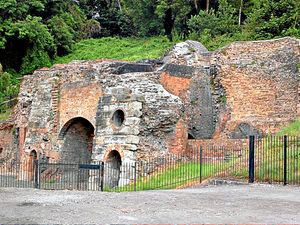
The Nag's Head Engine House is the oldest and only surviving example of early pumping engines on the Pontesford coalfield, near Pontesbury, which in the late 18th century was the centre of the lead smelting industry.
The engines were constructed to exploit the local coal field but the others have been demolished or significantly altered.
The Nag's Head Engine House, a small oblong building constructed from buff coloured rubble, was originally covered by a pitched roof.
It became disused in the middle of the 19th century, and apart from the large stone base used to secure the engine cylinder, nothing remains of the steam engine and its component parts.
It was first placed on the register in 2013, but a scheme to secure and repair the masonry remains was carried out this year with grant aid from Historic England and carried out by the Stiperstones & Corndon Hill Country Landscapes Partnership.
The works included rebuilding part of one demolished wall to ensure structural stability, as well as stone renewal, repointing and soft capping of exposed wall heads.
There are a total of 98 buildings across Shropshire on this year's "at risk" register, with 89 of them in the Shropshire Council area and a further nine in Telford & Wrekin.
One of the most prominent sites identified as being at risk is Shrewsbury Abbey, although work has now begun to address its problems.
"There are assorted defects associated with the variable quality of some of the particular building stones used," says the report.
"Parts of the chancel and transept parapets are in urgent need of repair and renewal."
Work to rectify these faults, funded through a £217 million lottery grant, began in July this year.
The pumping engine site at Muxton Bridge colliery remains on the list, along with the Iron Age farmstead at Pave Lane, near Newport, and Charlton Castle at Wrockwardine.
The 17th century Holy Trinity Church at Minsterley, near Shrewsbury remains on the list, despite receiving a Heritage Lottery Fund grant in 2016.
The register warns: "The use of Portland cement based mortar in conjunction with soft red bricks and Grinshill ashlar is causing the masonry to decay at an accelerated rate."
Also under threat is the remote 12th century St Michael and All Angels' Church at Smethcott, near Church Stretton.
According to the report, the clay-tiled roof is now in need of re-laying, while a new surface water drainage system was also needed.

